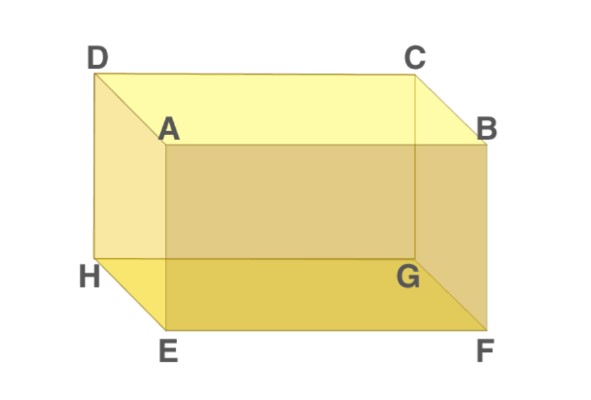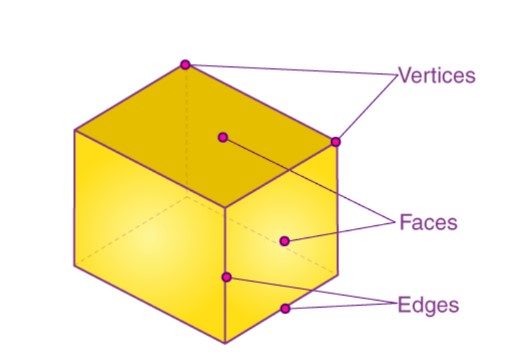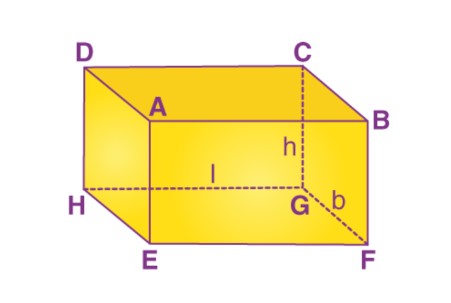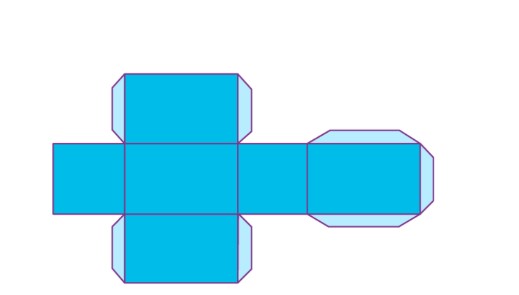In the world of mathematics, we can observe various figures that are similar to the cuboid, such as the rectangular cuboid, rectangular box, right rectangular prism, right cuboid, rectangular parallelepiped, and rectangular hexagon. Let's dive deeper into the topic of cuboids and explore them in detail with examples.
Introduction to Cuboids
A cuboid is a three-dimensional geometric shape, also known as a solid shape. It is a convex polyhedron, meaning it is bounded by six rectangular faces, with eight vertices and twelve sides. A cuboid is a type of rectangular prism, and a solid with six square faces is called a cube.
Real-Life Examples of Cuboids
A common real-life example of a cuboid is a rectangular box, such as a shoebox or a cereal box. These everyday objects have the characteristic rectangular faces and edges that define a cuboid.
Related Geometric Shapes
While a cuboid is a specific type of three-dimensional shape, there are other similar figures that share some of its properties:
- Rectangular Cuboid: A cuboid with all rectangular faces.
- Rectangular Box: Another term used to describe a rectangular cuboid.
- Right Rectangular Prism: A cuboid with all right angles (90 degrees) between its faces.
- Right Cuboid: A cuboid with all right angles between its faces.
- Rectangular Parallelepiped: A three-dimensional shape with six rectangular faces, but the angles between the faces may not be right angles.
- Rectangular Hexagon: A two-dimensional shape with six rectangular sides.
Definition of cuboid
A cuboid is a three - dimensional solid with 6 faces (rectangular), 8 vertices and 12 edges. The three dimensions of a cuboid are length , width and height. A perfect cuboid is called a cuboid of integer edges.
If we consider Euler's formula, the relation between the faces (F), vertices (V) and edges (E) of a cuboid satisfies the equation:
F+V=E+2
6+8=12+2
12=12
Cuboid Shape
A cuboid is a closed 3D figure bounded by rectangular faces, which means the plane regions of the rectangle. The shape of a cuboid is shown in the figure below

Faces,Edges and Vertices of Cuboid
A cuboid has 6faces, 8vertices and 12edges. All of these can be shown using the following notation:
Faces Cuboid
A cuboid is made up of six rectangular face. In the above diagram, there are six faces:
- ABFE
- DAEH
- DCGH
- CBFG
- ABCD
- EFGH
The pair of opposite and parallel face of the given cuboid are:
ABCD and EFGH(top and bottom faces respectively)
ABFE,DCGH and DAEH,CBFG (opposite and parallel face which are adjacent to the top and bottom face of the cuboid)
For each face, we can write the remaining face as their adjacent face such as the face ABCD is the adjacent to ABFE,BCGF,CDHG and ADHE.
Edges of Cuboid
The sides of all the rectangular faces are known as the sides of the cuboid. As we know that a cube has 12 edges. They are as follows : AB, AD, AE, HD, HE, HG, GF, GC, FE, FB, EF and CD Also, opposite side of a rectangle are equal.
Therefore,
- AB=CD=GH=EF
- AE=DH=BF=CG
- EH=FG=AD=BC
Vertices of Cuboid
The intersection point of the 3 sides of a cuboid is called a vertex of a cuboid and a cuboid has 8 vertices.
In the given cubic figure , there are 8 vertices A, B, C, D, E, F, G and H.
Let's take a look at visualizing the faces, edges and vertices of a cuboid.

Properties of Cuboid
- A cuboid has 6 faces,12 edges and 8 vertices.
- All face of a cuboid are rectangular in shape
- opposite sides of a cuboid are parallel to each other
- A cuboid has three dimensions : length, width and height.
- All angles at the vertices of a cuboid are 90 degrees.
Surface Area of Cuboid
The surface area of any three-dimensional shape is the total area covered by all its faces. Similarly, the surface area of a cube is equal to the sum of the area of all its six rectangular face. The surface area of a cuboidal box can be divided into two types, namely lateral surface area and total surface area. Its formulas can be obtained from the figure below.

- AB=CD=GH=EF=l
- BC=AD=EH=FG=b
- CG=BF=AE=DH=h
Cuboid Lateral Surface Area
The lateral surface area (LSA) of a cuboid is the sum of the areas of all faces except the top and bottom faces.
Lateral surface area of the cuboid=Area of face ADHE+Area of face BCGF+Area of face ABFE+Area of DCGH
=ADDH+BCCG+ABBF+CDBC
=bh+bh+lh+lh
=2(bh)+2(lh)
=2h(l+b)
Lateral Surface Area (LSA) =2h(l+b) sq.units
Cuboid Total Surface Area
The total surface area (TSA) of a cuboid is the sum of the area of all its rectangular face.
Area of face EFGH=Area of face ABCD=lb
Area of face BFGC=Area of face AEHD=bh
Area of face DHGC=Area of face ABFE=lh
Total surface area of a cuboid = sum of the area of all its 6 rectangular face
=Area of(ABCD+EFGH+BFGC+AEHD+DHGC+ABFE)
=(lb)+(lb)+(bh)+(bh)+(lh)+(lh)
=2lb+2bh+2hl
=2(lb+bh+hl)
Total Surface Area (TSA) =2(lb+bh+hl)
Volume of Cuboid
The volume of a cube is equal to the product of the area of the base times its height. Thus, the volume of a cuboid is equal to the product of the rectangular face of the base and the height.
Volume=(LengthBreadth)Height
=(lb)h
=lbh
Volume=lbh cubic units
Diagonal of Cuboid
The lengths of the diagonals of a cuboid of dimensions l, b and h are given by the formula:
Diagonal=l2+b2+h2units
This formula is for the length of the space diagonal of a cuboid. Whereas the diagonals of a face of a cuboid are the diagonals joining the vertices on the faces of the cube. There are two diagonals for each face, so the total number of face diagonals that can be drawn in a cuboid is 12 (6 faces 2).
Perimeter of Cuboid
The perimeter of the cuboid will be the sum of the length of all the edges. Thus, from Figure above,
- AB=CD=GH=EF=length
- BC=AD=EH=FG=breadth
- CG=BF=AE=DH=height
Perimeter of cuboid
=AB+CD+EF+GH+BC+AD+EH+FG+CG+BF+AE+DH
=(l+l+l+l)+(b+b+b+b)+(h+h+h+h)
=4l+4b+4h
=4(l+b+h)
Perimeter (P) =4(l+b+h)units
Cuboid Net
A solid shape mesh is a plane obtained by opening it in a line. This lattice will again become the original solid when we fold it. The number of different lattices for a solid or a rectangular cuboid of 3 different lengths is 54.

Example: Find the volume of a cuboid of length 10cm, breadth 8cm, height 4cm.
Solution :
length l=10cm
breadth b=8cm
height h=4cm
Volume=lbh
=1084
=320cm3
Frequently Asked Questions
The main difference between a cube and a cuboid is their faces, that is, a cube has six square-shaped faces, while a cuboid has six rectangular faces. This mean that all edges of a cube are equal and that the edges of a cuboid can be written as group of 3 equal edges.
As we know that a cube is a special type of solid whose all the edges are equal in length. Therefore, A cuboid can have a square face.